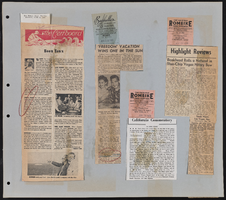Search the Special Collections and Archives Portal
Search Results

Photographic postcard of Hemenway Wash, Nevada and Colorado River, 1932
Date
Archival Collection
Description
View of the river and Hemenway Wash, with Ragtown (Williamsville) on the banks of the river.
Transcribed Notes: Transcribed from front of postcard: "Hemenway Wash and Colorado River from lookout point near Hoover Dam, Las Vegas, Nevada. Frashers Foto - Pomona, Calif." Transcribed from photo sleeve: "Ragtown/Williamsville at center."
Image
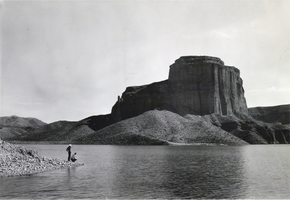
Photograph of Temple Bar, Lake Mead, circa 1935-1950
Date
Archival Collection
Description
Image
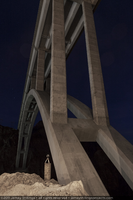
Photograph of the Mike O'Callaghan-Pat Tillman Memorial Bridge, Nevada-Arizona border, January 12, 2011
Date
Archival Collection
Description
Image
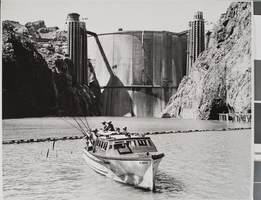
Photograph of Grand Canyon Nav. Co. yacht on Lake Mead, 1935
Date
Archival Collection
Description
Image

Transcript of interview with Russell Grater by Frederick Dougan, February 10, 1977
Date
Archival Collection
Description
On February 10, 1977, Frederick Dougan interviewed Russell Grater (born 1907 in Lebanon, Indiana) about his career in the U.S. National Park Service. Grater first talks about his move to the Southern Nevada area and his work that impacted the Hoover Dam project. He then talks about the town of St. Thomas, Nevada, the Lost City, and the activities of tourists. Grater also talks about his work in excavation, the indigenous American Indian tribes of the area, findings on petroglyphs, and the types of wildlife that were found in the area. He later talks about findings related to fossils, gold mining, the effects of World War II on the dam project, and vegetation in the area.
Text

Transcript of interview with Neil H. Holmes by Laura Bell, February 12, 1975
Date
Archival Collection
Description
On February 12, 1975, collector Laura Bell interviewed her neighbor, plant mechanic foreman, Neil H. Holmes (born on November 16th, 1897 in Chicopee, Kansas) in the collector’s home in Boulder City, Nevada. This interview covers the construction of Boulder (Hoover) Dam. During this interview Neil also discusses local living conditions in 1931.
Text
Clarence Ray oral history interview
Identifier
Abstract
Oral history interview with Clarence Ray conducted by Eleanor L. Walker in 1991 for the African American in Las Vegas: a Collaborative Oral History Project. In this interview, Ray provides details of his ancestry and upbringing, his education, and race relations in the western United States before 1930. He then moves on to his first visit to Las Vegas, Nevada in 1922, and his movements before settling permanently in the 1940s. He explains that the main source of employment for the relatively small Black population during the 1920s and early 1930s was the railroad, but a number were also in business. Mr. Ray provides thumbnail sketches of many of the early residents, and is particularly informative about "Mammy" Pinkston, Mary Nettles, the Stevens family, and the Ensley family. Systemic racial discrimination against Blacks developed in southern Nevada during the 1930s, and Mr. Ray provides some useful details on this along with his discussion of his career in gaming and his social and political activities.
Archival Collection
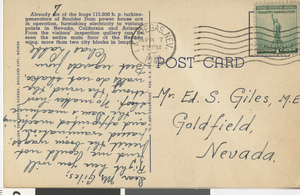
Postcard of a written message on the back, 1934-1935
Date
Description
Image

Transcript of interview with Miriam Belmont by Laurie Brower, March 8, 1975
Date
Archival Collection
Description
Text

